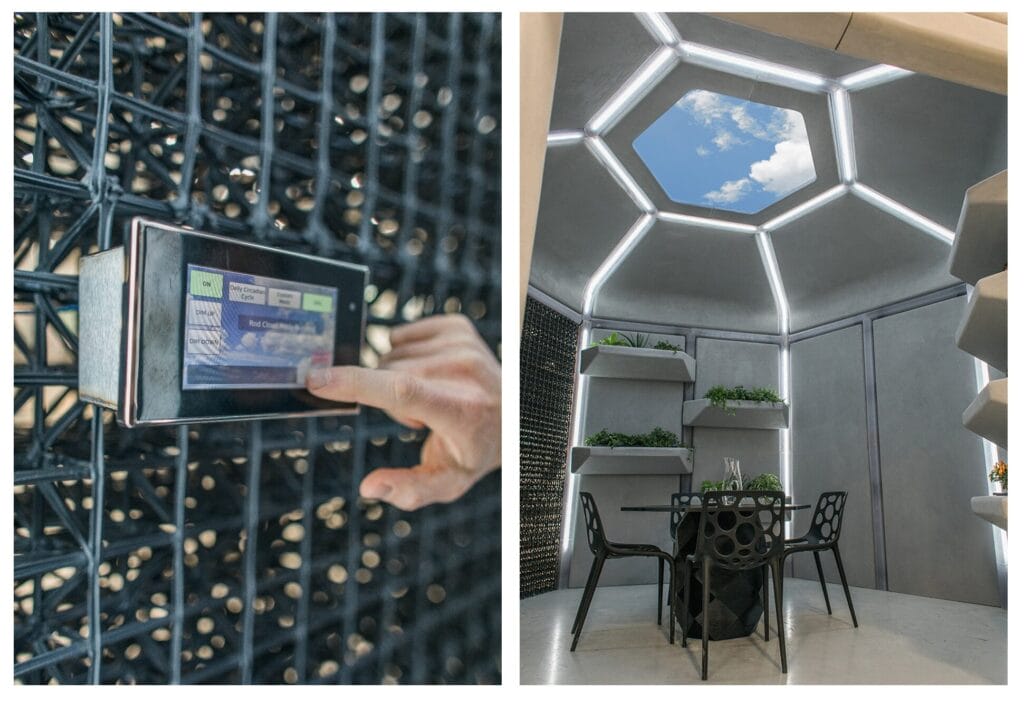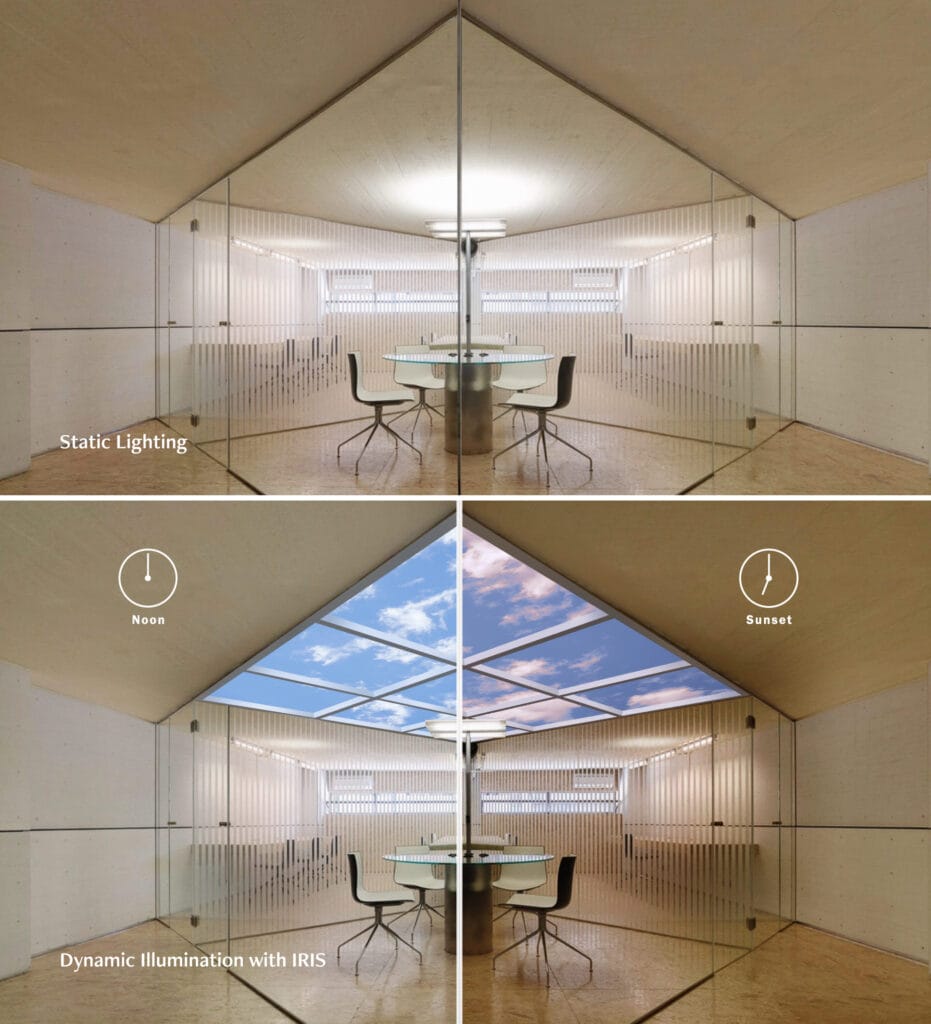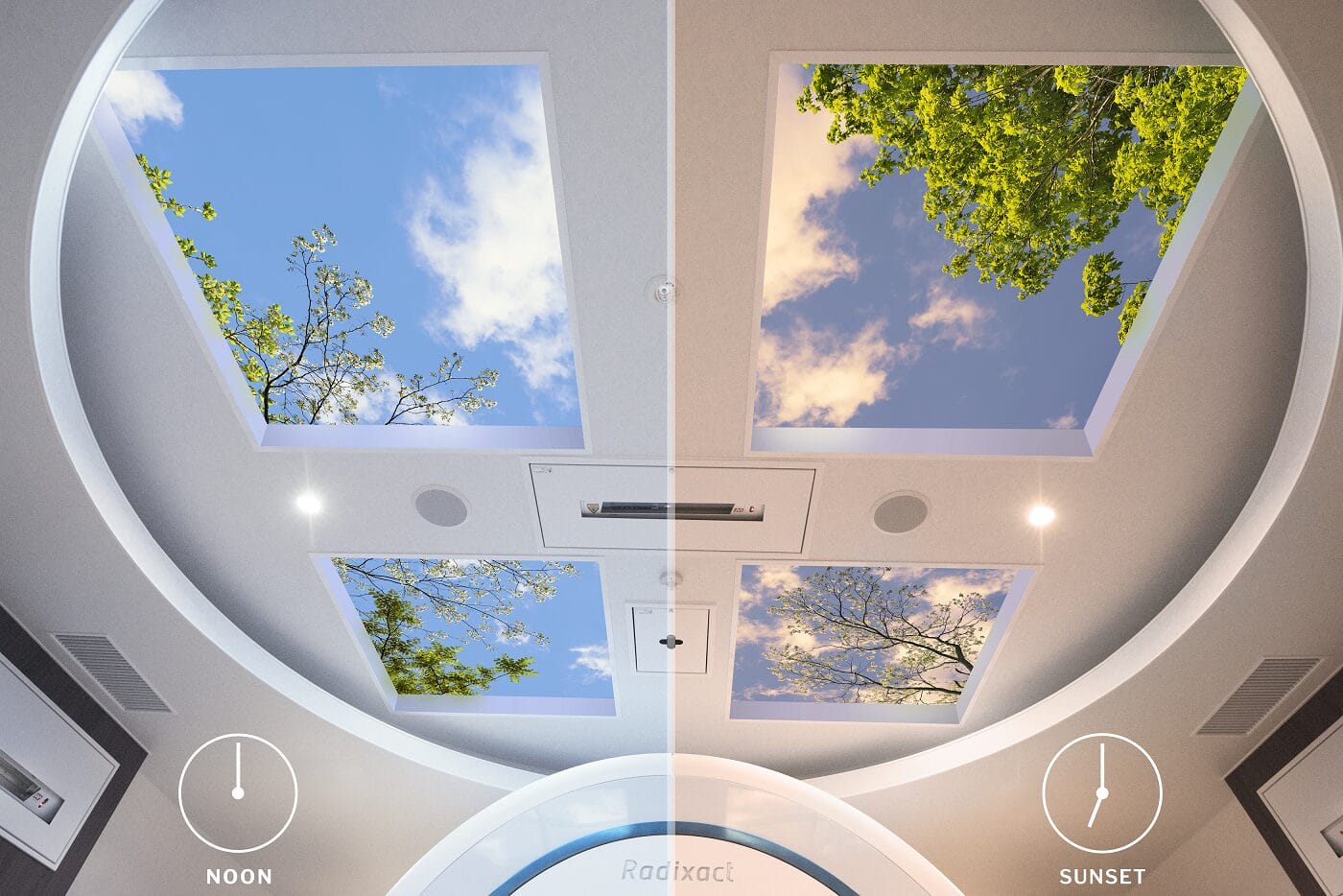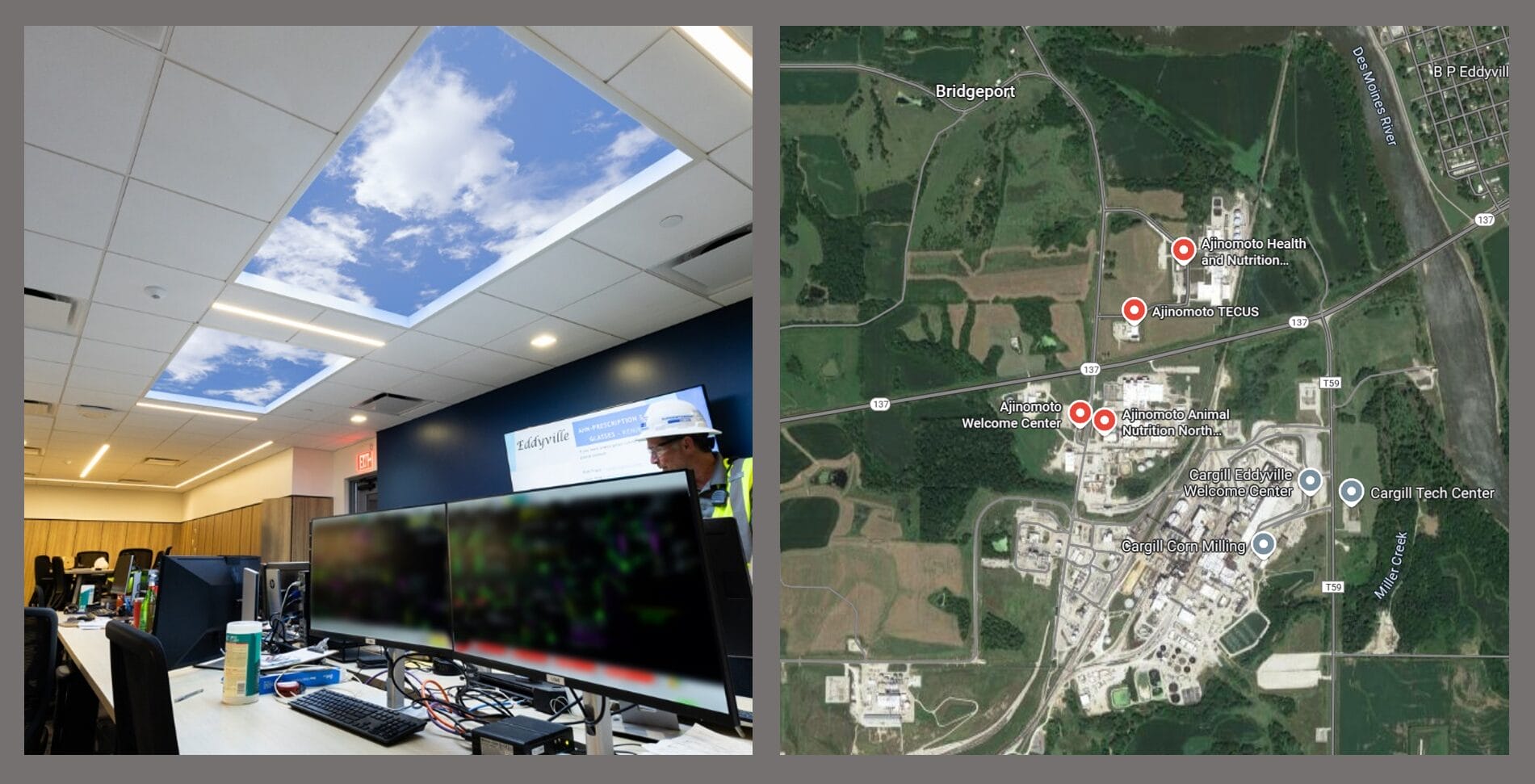The IRIS Circadian SkyCeiling is an award-winning dynamic LED lighting system featuring two algorithms—PRiSM and DiAL. The first one, PRiSM, is a weighted set of seven wavelengths that provides circadian support through correlated color temperature modulations. The second algorithm, DiAL, supports attention restoration through light intensity oscillations that mimic the diaphanous effect of clouds drifting beneath the sun. Together, these algorithms deliver an expressive, painterly cadence across Sky Factory’s fMRI-verified Open Sky Compositions, the only overhead nature photography designed to reframe the zenith in stressful interiors.
A 2nd generation circadian illusion of nature, IRIS incorporates all three elements of daylight—color temperature, dynamic irradiance (intensity), and its spatial dimension into a bone fide, evidence-based design (EBD) virtual skylight. IRIS SkyCeilings generate the vivid illusion of daylight’s natural variability across high-resolution, sky photography selected for its ideal compositional properties to evoke the sunrise-to-sunset arc.
The IRIS image library showcases Open Sky Compositions whose perceived color values will shift as weighted wavelength values and brightness oscillations weave a luminous eurythmy of perceived volume and subtle refractions that evoke the sun’s tacit position in space. By mirroring the emotional and sensory qualities of daylight, IRIS delivers positive outcomes for occupants who spend the lion’s share of the workday in isolated, windowless, and sterile interiors with windows bereft of a visual connection to nature.
Boosting Workplace Wellness & Mental Acuity
IRIS-enabled SkyCeilings are equipped with a Pharos Control Panel programmed to lock a facility’s geographic location, queuing up the appropriate sunrise-to-sunset arc according to the pertinent season and time of day. In healthcare environments where staff spend long shifts in areas near the building core, IRIS provides biophilic engagement, thereby supporting shift performance, emotional balance, and mental restoration.

IRIS Circadian SkyCeilings can also be programmed for shorter sunrise-to-sunset sequences to provide a gentle and comforting display of color across the perceived zenith, enabling patients to relax during diagnostic or therapeutic sessions. See the IRIS Circadian SkyCeiling page for details.
The IRIS Circadian SkyCeiling can also be integrated to a facility’s tunable fixture system, not only underscoring the circadian properties of in situ systems, but augmenting them by providing a powerful visual cue to daylight’s inherent spatial canvas. Please speak with a Sky Designer to address your property’s current lighting system or the proposed technology specified for your project.
In its latest edition, Architectural Products magazine selected IRIS for a Product Innovation Award (PIA) in its Specialty Ceilings category. The therapeutic benefits provided by IRIS include circadian support, helping to sync the physiology’s sleep-wake cycles, as well as support the ultradian cycle that governs focused attention. By mimicking daylight’s inherent brightness variability, which helps recharge and restore attention, IRIS-enabled SkyCeilings create the illusion of perceived proximity to a natural exterior and its corollary—the passage of time, a feature that static lighting nullifies.

In isolated interiors, static lighting drains and dulls attention. And that’s why a visual connection to nature and the visual progression of daylight is biophilic design’s most restorative attribute in the built environment. In a highly constrained environment without spatial polarity our mental acuity and emotional balance is not able to recharge as efficiently as we use open space and biophilic features to maintain homeostasis.
What would happen in extreme environments like outer space exploration where window views lack Earth’s blue atmosphere that our physiology depends on? Learn more about how Foster + Partners and Branch Technology brought Sky Factory into a demo project for NASA, the American Space agency, to explore dynamic lighting technologies and therapeutic architectural features like IRIS that could help astronauts adapt to the perilous conditions they would face in deep space exploration, living in isolated habitats far, far away from Earth.



